First stop: Bita Lake
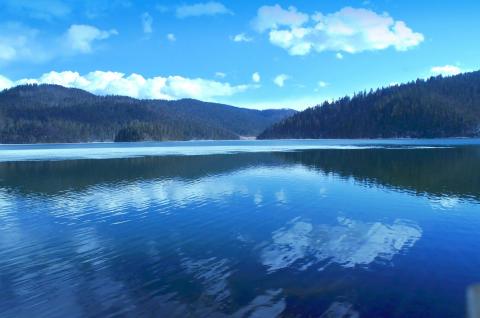
Bita Lake Nature Reserve is located 35 kilometres to the east of the county town of Shangri-la.
The reserve centres on the Bita Lake itself, which is adjacent to Luoji Village to the east, south and north and borders Jianjian Town.
The length of its longitudinal distance is approximately 60 kilometres and its latitudinal length approximately is around 14 kilometres wide, covering a total area of 1,418 hectares. The Tibetan meaning of "Bita Lake" is the place where oak trees form mats.
There are wide varieties of national, protected animals and plants in the reserve, including fish named "hemibarbus labeo" by biologists. The fish comes from the ancient quaternary glacial period and is succulent, tender and delicious to eat, including in a dish called ‘Salted Fish with Eggplant.’
Bita Lake, located at the heart of the reserve, with water depths of up to 40 metres.
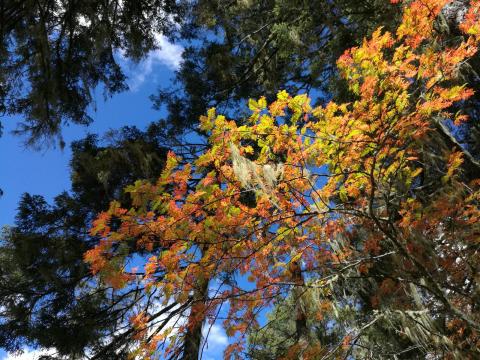
To visit Bita Lake, you can take the bus from Zhongdian to Shuangqiao, costing 20 Yuan. It’s a 25 kilometre journey by road and then you can either reach the lake on foot or by riding a horse, costing 30 Yuan.
Walking is recommended, so that you can truly appreciate your surroundings, achieving dialogue between nature and your heart.
Second stop: Ganden Sumtseling Monastery
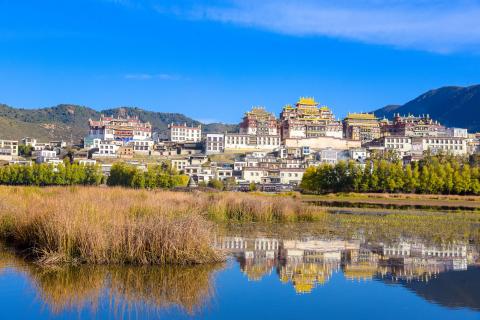
Ganden Sumtseling Monastery, namely "Guihua Monastery," is five kilometres away from Shangri-la County.
The monastery is the largest famed Tibetan Buddhism temple in Yunnan, covering an area of 500 Mu and is fenced with a solid and thick city wall.
The monastery is set up with five gates, which include Zhaya, Duke, Dongwang, Longba and Lugu. Two primary temples, including Zhacang Temple and Jikang Temple, are built at the highest points and in the middle of the monastery.
The monastery, facing to the south, is an engraved five-storey building and 1,600 people may be accommodated to sit down to chant Buddhism scripture.
The surrounding walls are "cabinets of numerous rolls" of Tibetan scriptures, and the main hall is consecrated with the bronze statue of the 5th generation of Dalai.
Stupas of famous monks' remains are lined up, and dazzling gold, silver, and famous paintings are kept internally.
There’s a soaring tower for bells and drums and the sound is audible for five kilometres around, with drumming for time keeping happening in the morning, afternoon and evening.
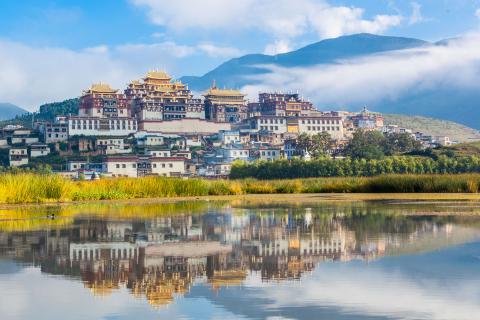
The roof is decorated with glazed tiles and looks like the palace, beaming brilliant golden light.
Ganden Sumtseling Monastery, five kilometres away from Zhongdian County, can be reached by taking the No.3 Bus at the Jiaotong Hotel stop of the county seat.
You can also reach the monastery by minibus, reserved exclusively for tourists with fares of two Yuan. By taxi, it will cost you 10 Yuan.
You must travel in a clockwise direction to visit the Buddhist temple, from left to right.
Third stop: Baishuitai
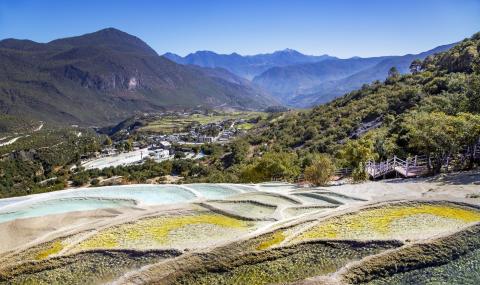
Baishuitai, located at Baidi Administrative Village, Sanbai Town, in the southeast of Shangri-la County and just over a hundred kilometres away from the county seat, can be found at an elevation of 2,380 metres.
Calcium carbonate, a white sediment, constantly covers the surface of the area and thereby forms various karst landforms.
Baishuitai, called "Baipuzhi" in Naxi language, indicates increasingly growing flowers, and it is one of biggest Huaquan terraces in China. It covers an area of around three-square kilometres. Baishuitai is not only a scenic destination, but also one of the cradles of Naxi Dongba culture.
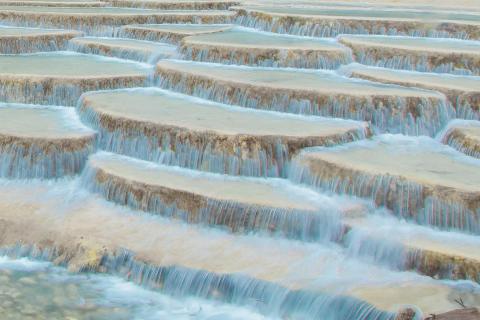
The regular buses starting from the county seat of Zhongdian to Sanba Town, with a ticket price of 20 Yuan, are available in mornings on odd-numbered days. You get off in Baidi Village.
Fourth stop: Napa Lake
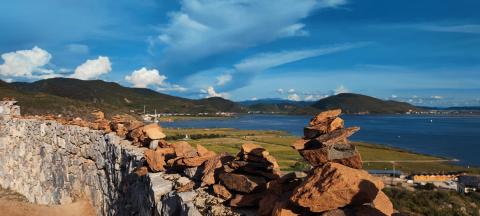
"Napa Lake" in Tibetan language means "the lake at the back of the forest." It is a typical seasonal lake and it shows totally different views all the year round.
Late summer and early autumn, it resembles a carpet intertwined with clusters of flowers, meadow and highland barley. While in the winter, waters resemble a huge mirror.
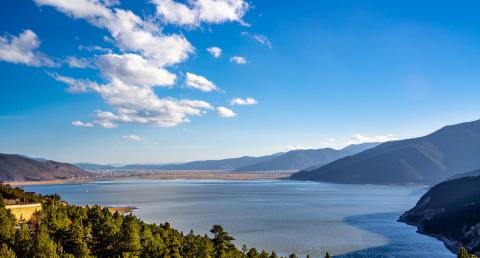
As one of the most scenic spots with plateau characteristics in Shangri-la, Napa Lake is not only the biggest grassland in all of Shangri-la County, but also an ideal habitat for black-necked cranes and rare birds.
June is the best time of year to visit Napa Lake Nature Reserve. It’s when the grasses and flowers sprout shoots. Various wild-flowers blossom successively during this time and beautiful flowers and luxuriant grass grow up on the boundless prairie. Herds of cattle and sheep are visible across the grassland.

